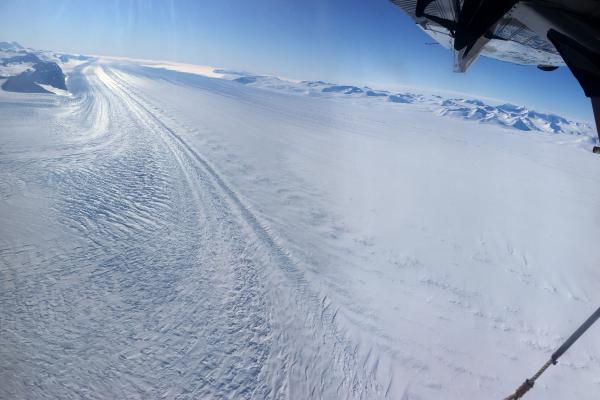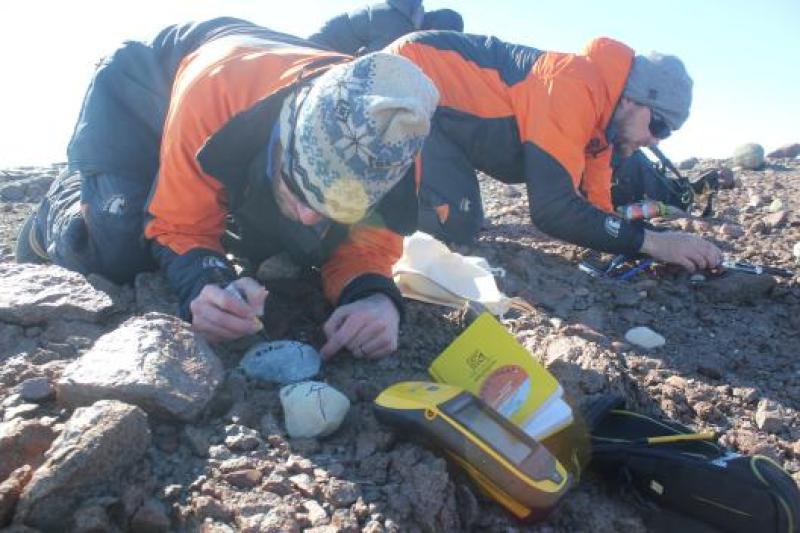Study by Alum Jamey Stutz Shows Byrd Glacier's Accelerated Inland Thinning During the Genesis of the Ross Ice Shelf in Antarctica

ORIGINALLY POSTED BY BYRD POLAR AND CLIMATE RESEARCH CENTER



Precise dating of glacial deposits from Byrd Glacier's Lonewolf Nunataks shows that one of the world's largest glaciers thinned rapidly around 8,000 years ago as the Ross Ice Shelf formed, based on a recently published study.
Using surface exposure ages from glacial erratic cobbles at two sites within the Lonewolf Nunataks, researchers found the initial glacial thinning occurred at ~15 ka, with rapid thinning at ~8 ka. Ice sheet model simulations that best match the thickness constraints have faster basal sliding, but models best matching the timing have higher basal friction. This apparent change in basal sliding regime from the Last Glacial Maximum to the present may be related to the formation of the Ross Ice Shelf.
Studies like these provide critical benchmarks for numerical models to understand the future Antarctic Ice Sheet.
This study is available online and will appear in a special issue of Earth Surface Processes and Landforms, published by the British Society for Geomorphology, an international interdisciplinary journal, to be used to understand glacier and ice sheet behavior.
The study's principal author is Polar Rock Repository Research Scientist Jamey Stutz of The Ohio State University's Byrd Polar and Climate Research Center (Byrd Center). He conducted his research at the Antarctic Research Centre in Wellington, New Zealand, where Ohio State alumni and previous Byrd Center members Peter Webb and Peter Barrett are professors. Other co-authors included Shaun Eaves, Kevin Norton, Klaus M. Wilcken, Claudia Moore, Rob McKay, Dan Lowry, Kathy Licht, and Katelyn Johnson.
Support for this research was provided by Kenn Borek Air, Antarctica New Zealand, Antarctic Research Centre, School of Geography, Earth and Environmental Sciences, Te-Herenga Waka Victoria University of Wellington, Wellington, New Zealand, NZ Antarctic Science Platform and Australian Nuclear Science and Technology Organization (ANSTO).
Read about this study by visiting Earth Surface Processes and Landforms or download the PDF.
